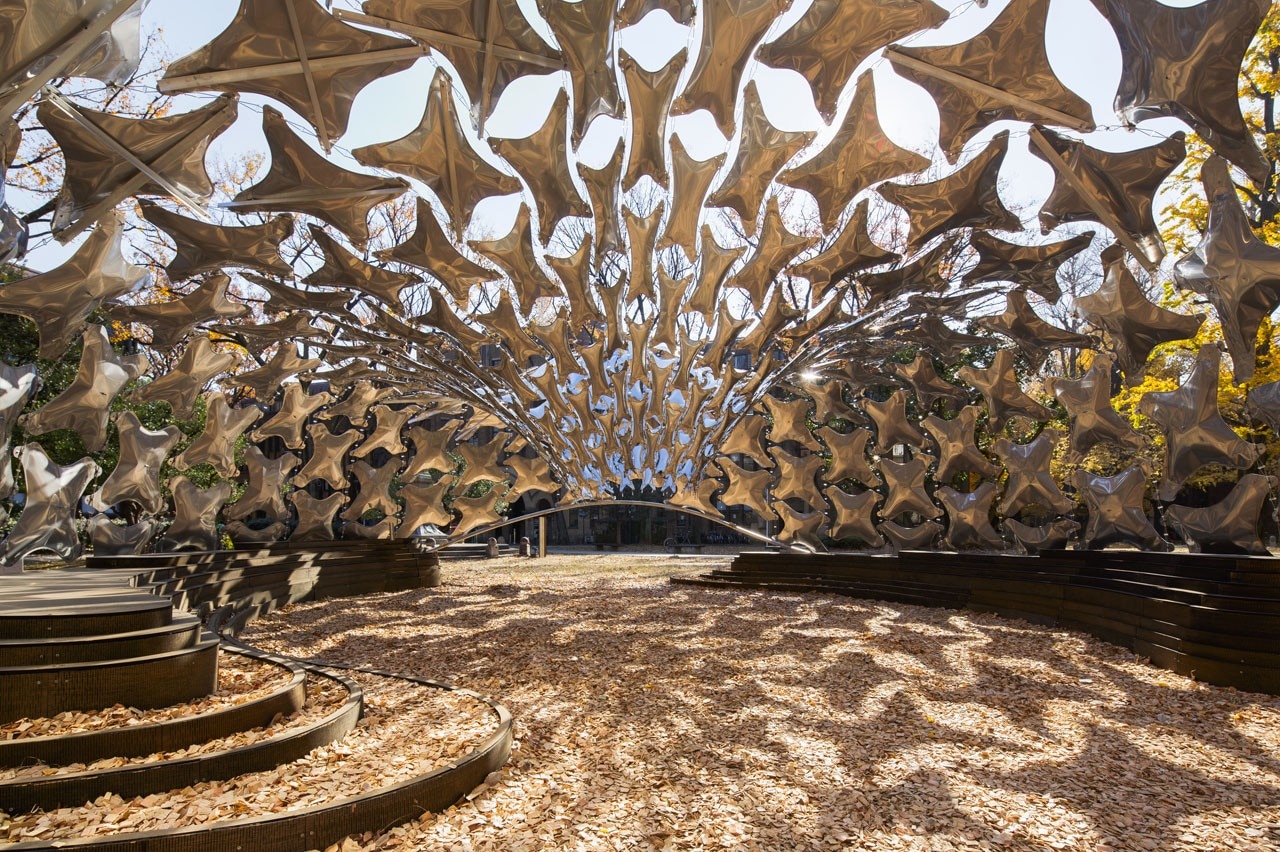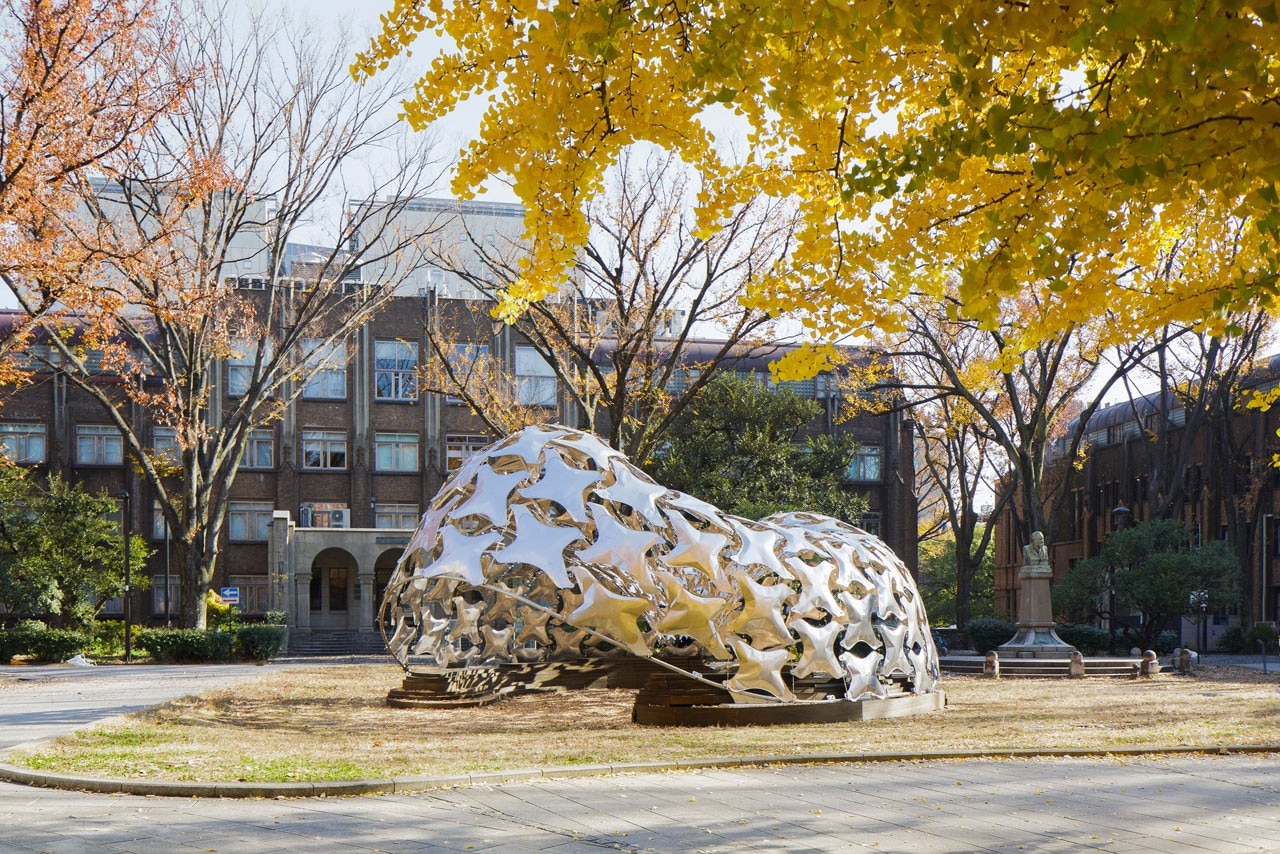
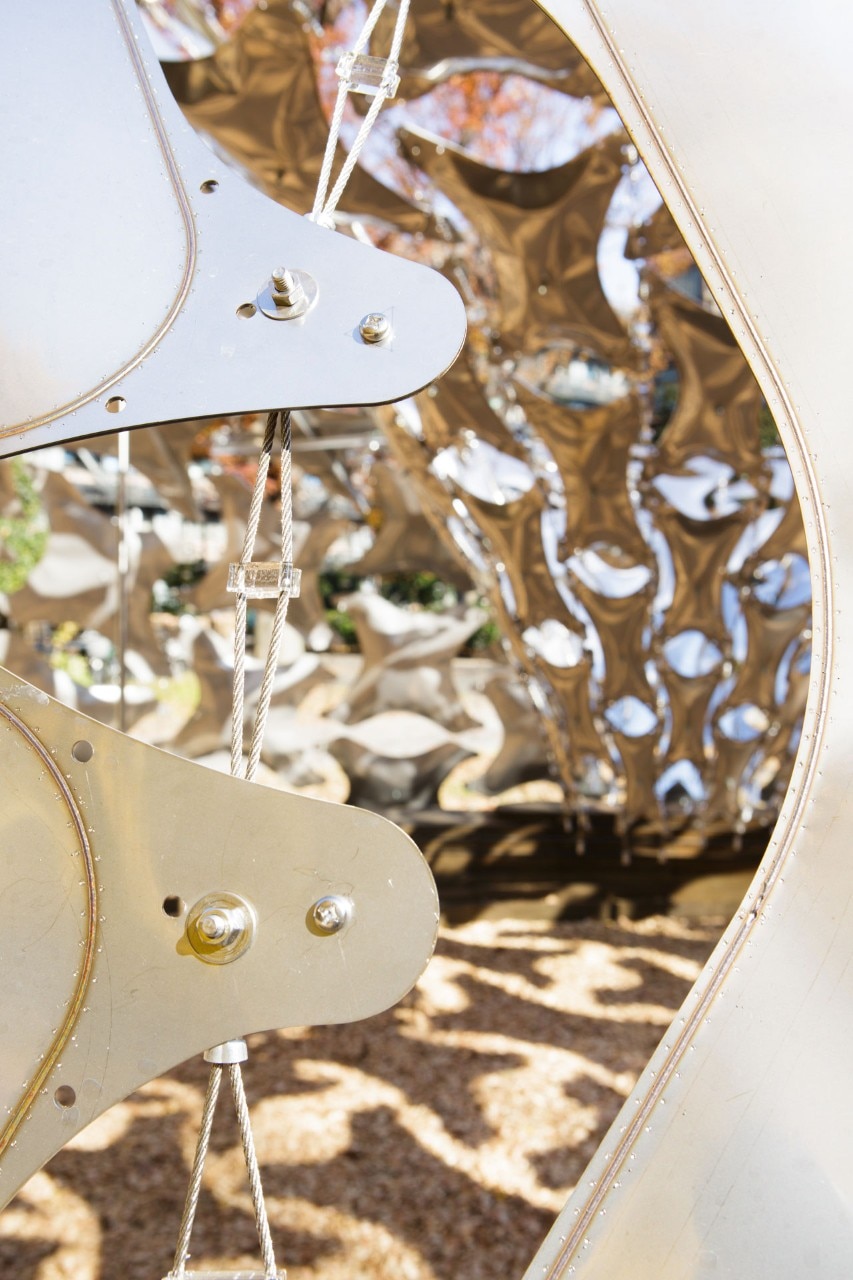
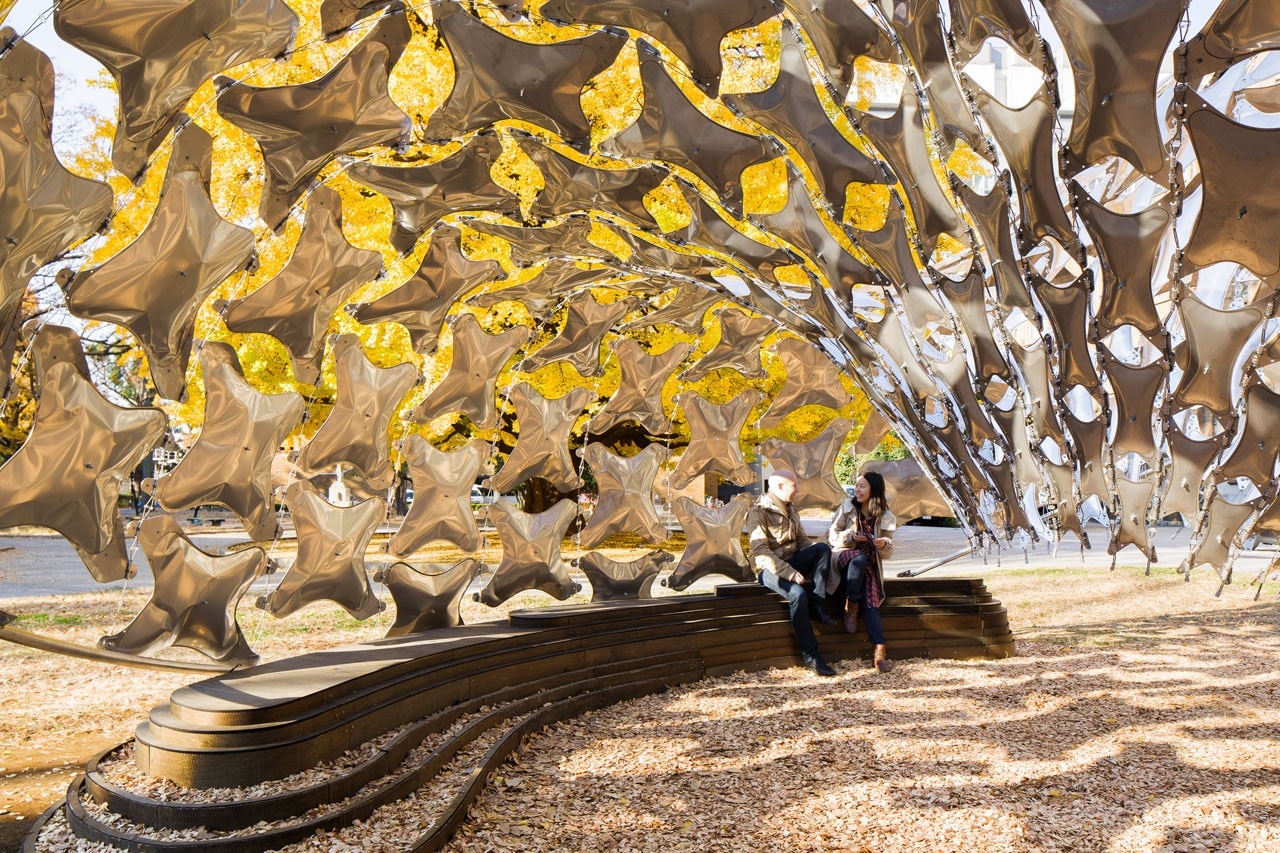
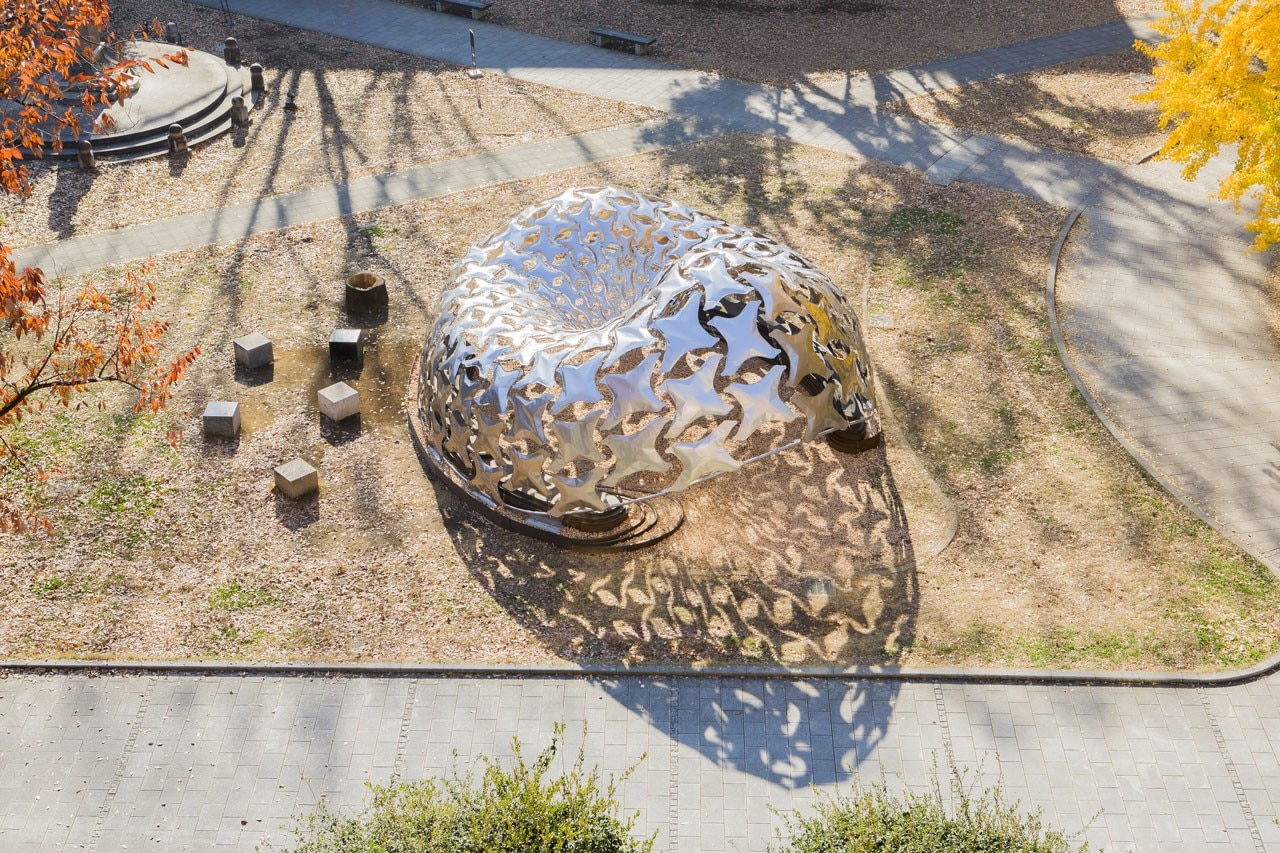
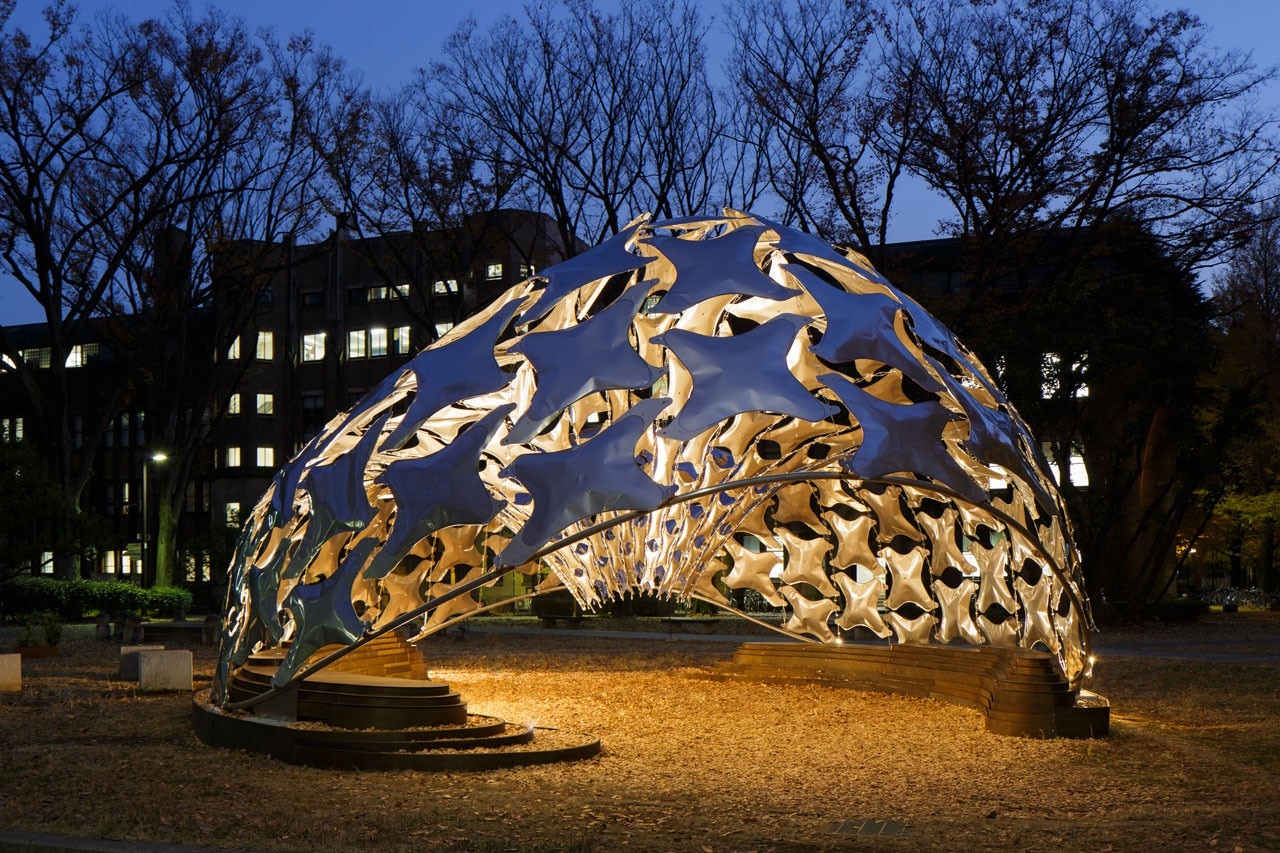
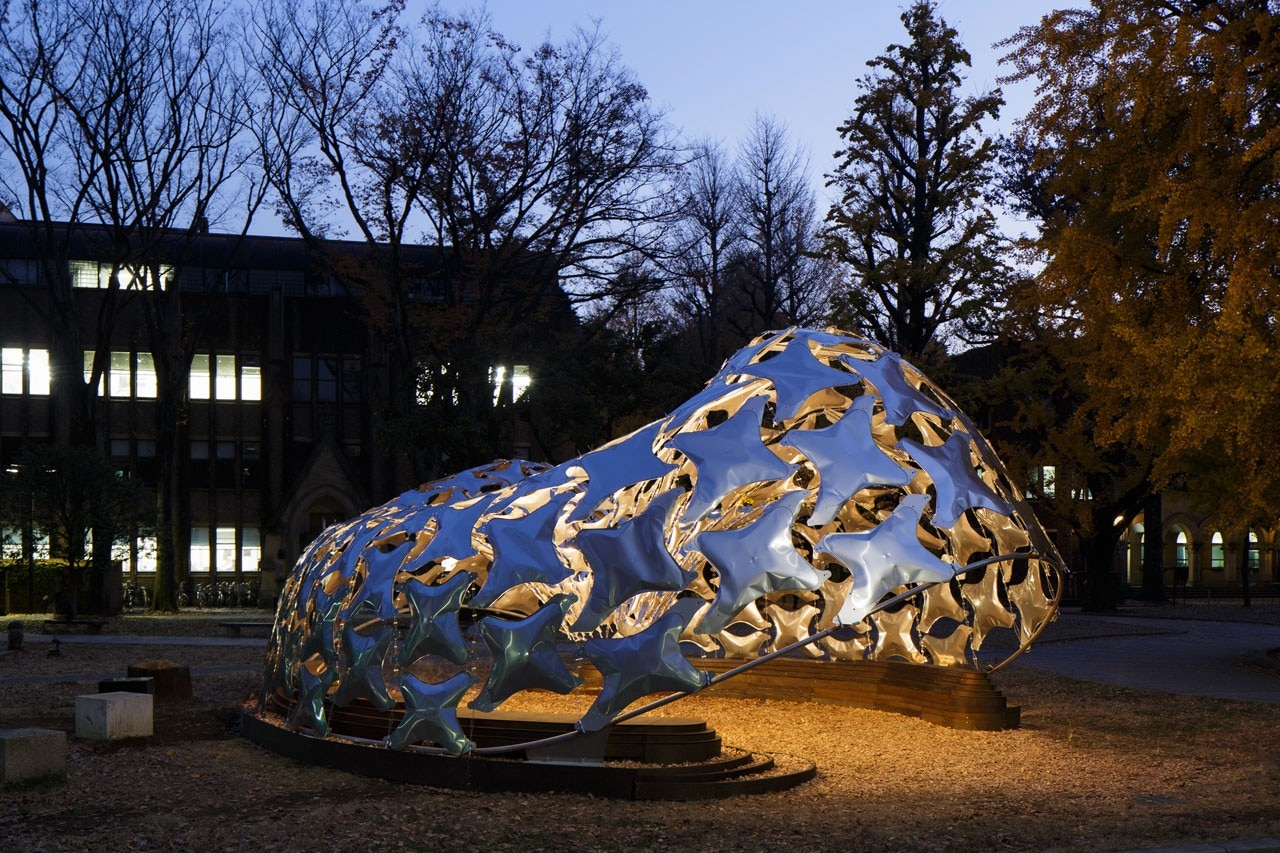
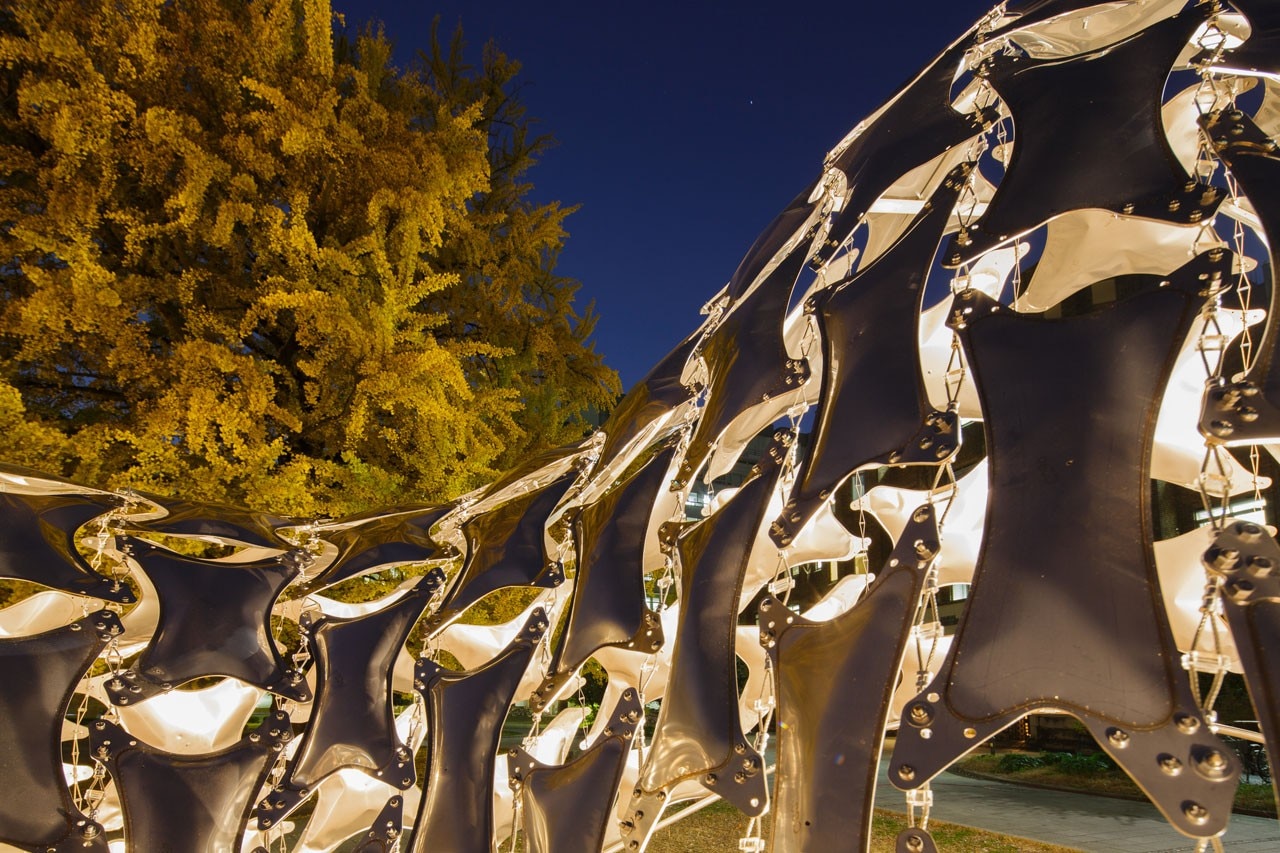
99 Failures Pavilion
Project: The University of Tokyo, Digital Fabrication Lab Pavilion 2013
Design Team:
The University of Tokyo teaching staff: Yusuke Obuchi, Toshikatsu Kiuchi, So Sugita, Hironori Yoshida
The University of Tokyo students: Christopher Sjorberg, Yeonsang Shin, Miguel Puig, Zhang Ye, Ana Luisa Soares, Ma Sushuang, Tong Shan, Andrea Trajkovska, Quangtuan Ta, Wei Wang, Anders Rod, Benjamin Berwick, Qiaomu Jin, Fawad Osman, Yanli Xiong, Andrea Bagniewski, Kevin Clement, Ornchuma Saraya, Minjie Xu
Obayashi Corporation: Tomoo Yamamoto, Kenichi Misu, Gendai Ono, Yasuo Ichii, Keisuke Fujiwara, Shunsuke Niwa, Tatsuji Kimura, Masaru Emura, Taiki Byakuno, Takahide Okamoto
Structural engineer: Jun Sato
Fabrication of components: Tsukasa Takenaka (AnS Studio)
Construction: Multibuilder
Fabrication: Togari Kogyo
Structure: Freeform Surface Tensegrity Structure
Materials:
Compressive components: stainless steel plates with 0.5 mm / 0.8 mm / 1.2 mm / 1.5 mm thickness
Tension cables: stainless steel cables in 3 mm diameter
Base ring: stainless steel pipe in 48mm diameter
Foundation: precast concrete blocks
Furniture: painted plywood
Weight: 1.5 t (upper structure in stainless steel), 1 t (concrete foundation)
Design Phase: October 2012 – March 2013
Design development, fabrication & construction: April – November 2013
Completion date: 24 November 2013

